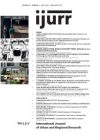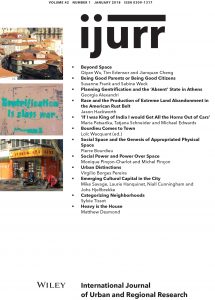The structure of social space manifests itself, in the most diverse contexts, in the form of spatial oppositions, appropriated physical space functioning as a spontaneous metaphor for the social order. There is no space that does not express social hierarchies and distances in a more or less distorted fashion, especially through the effect of naturalization associated with the durable inscription of social realities in the physical world. The structure of the spatial distribution of powers records the balance of social struggles over the profits of space, which are waged individually (as indicated by mobility) and collectively (through political contests over housing policy, for instance). The stake of these struggles is the construction of spatially based homogeneous groupings, that is, segregation that is both cause and effect of the exclusive usage of a space. These profits take the form of profits of localization, rents of situation, profits of rank and profits of occupation. The ability to dominate appropriated space depends on the capital possessed, which allows one to keep undesirable persons and things at a distance and to draw desirable ones closer. Yet one can physically occupy a location without inhabiting it properly if one does not dispose of the means tacitly required for that, beginning with the proper dispositions, for it is the habitus that makes the habitat.

